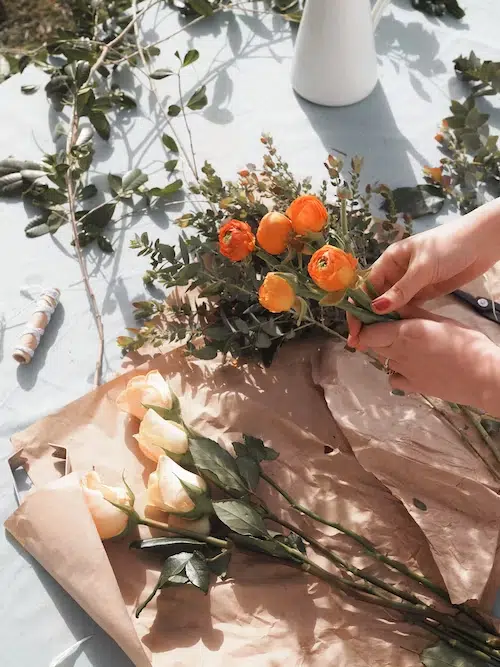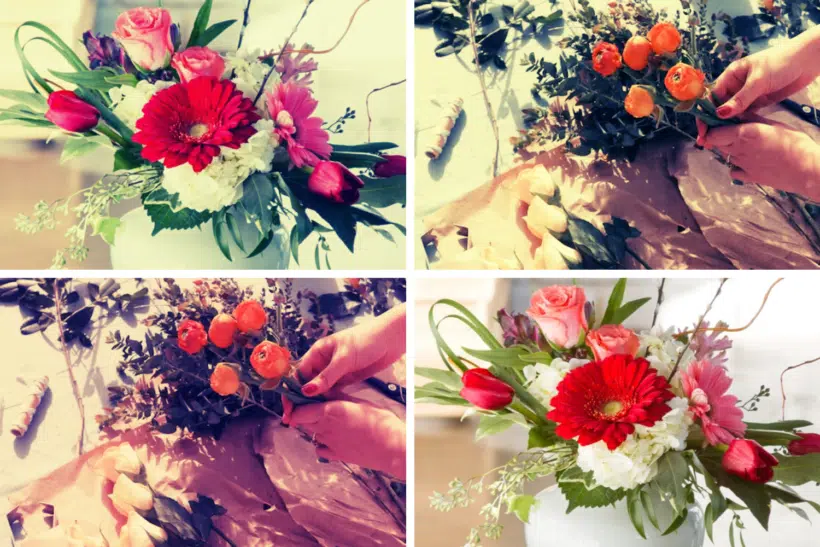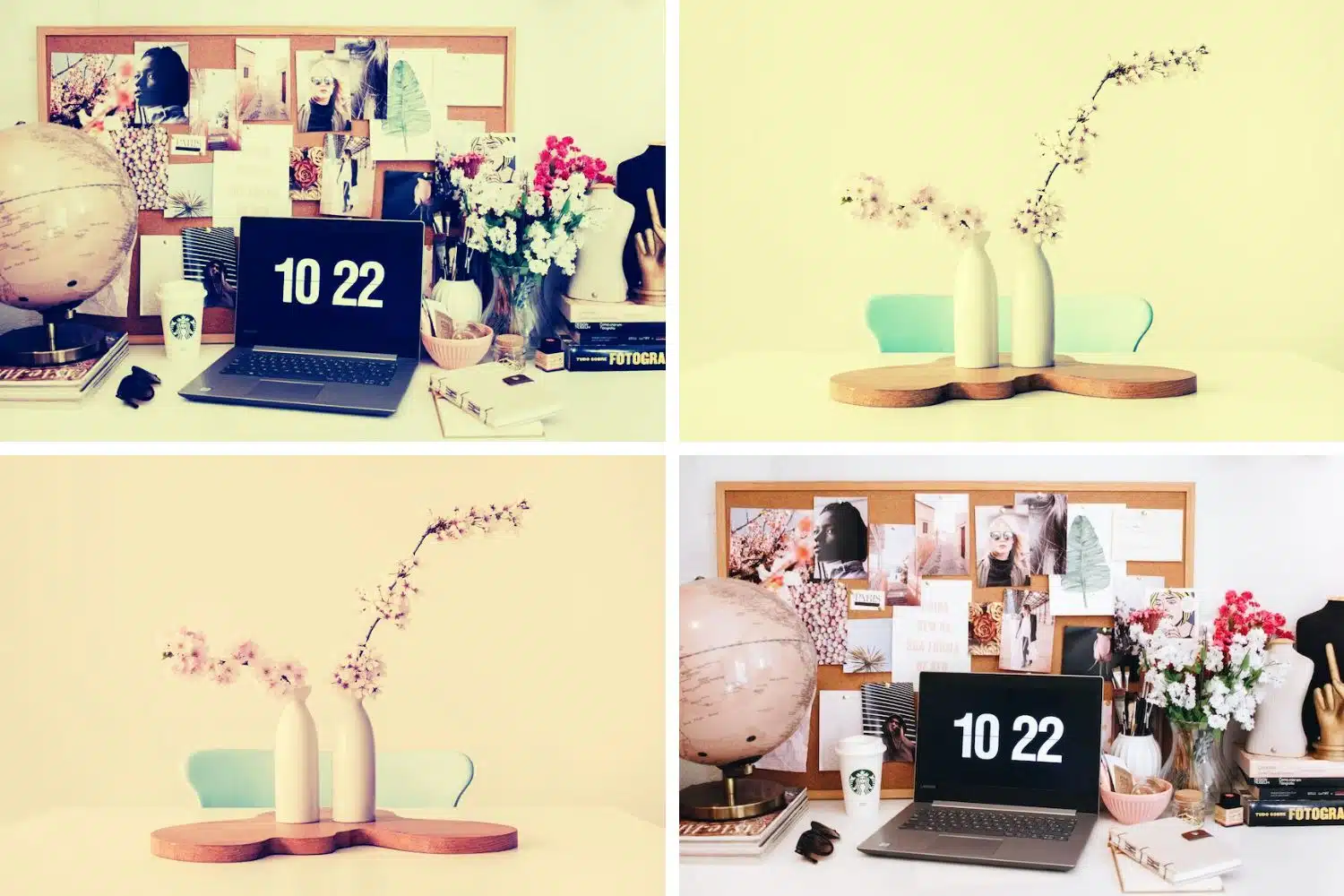The idea of creating your own home-grown flower arrangements has a truly special appeal. Flowers are always nice, but it is particularly nice to know that a creation is distinctly your own, from beginning to end.
In fact, there are people who love the outdoors so much that they make flower farming into a profession. You can find jobs on flower farm online on Jooble, and also jobs in the floristry industry. Even if you are interested in arranging just for your own purposes, it would be helpful to learn what goes into the amazing displays that you see professionals putting together. Although there is definitely an art and a science to it, even non-professionals can learn the basics.
Now, let’s take a look at some of these principles of creating flower arrangements. Before you get started with your arrangements, there are certain things that you should keep in mind with regard to where you put them.
Consider the larger space

The first thing you should do is think about where you want your flowers to be. Whatever you create will revolve around the place that you put it in.
Flowers can be anywhere, of course. You can choose a part of the home, create an arrangement as a gift, or even create arrangements for special occasions. If you choose a part of the home to put them in, think about not only the colors and angles that will surround them, but the part of the room that they will be placed in.
If they will be in the middle of the room, they will be visible from all sides. In this case, you should take care that every part of the arrangement look nice as people walk around it. If they will be in a corner, you will only have to worry about one part of the arrangement, but think about its overall positioning vis-a-vis the wall.
Size is important
Another thing you should keep in mind is the overall size of your arrangement and whether it makes sense in the space that you are putting it in. If you have a tiny group of flowers and want to put it in a corner next to a vaulted ceiling, this might not make sense. What you create should be in proportion to its surroundings.
The ten principles of flower arranging

Once you’ve thought about where you will put your arrangements, you can think about how you will put them together. There are ten principles that florists follow with regard to creating arrangements:
1. Balance
People may or may not consciously realize it, but pieces that are balanced are more aesthetically pleasing overall than ones that are lopsided. If something looks like it is falling over, it tends to make people nervous when they look at it. Displays should have more or less equal weight to both sides and give people a satisfied feeling when they look at them.
2. Stability
A similar principle is that of stability. If balance is a principle that governs how flower arrangements should be created horizontally, stability applies to the vertical proportions of arrangements. In other words, you shouldn’t create arrangements that are too narrow towards the bottom, but rather make it look like they have a sturdy base to blossom out from.
3. Proportion
There should be a more or less balanced proportion of your flower sizes. While you can certainly include a certain number of large and small ones, you don’t want to have too many that are small or large because it will disrupt the overall feel of your arrangement.
4. Scale
The principle of scale also applies. Be sure that the vase you choose complements your arrangement and doesn’t detract from its appeal. If your vase is too small, it could look like the flowers are going to fall out of it. If it is too big, it could look like the flowers are being swallowed up.
5. Orientation
Orientation is a similar principle to where you will place your flowers in the room. Think about the side that you would most like people to see, if the arrangement will be against a wall, and make sure that it is turned that way.
6. Rhythm
Just as in musical rhythms, aesthetic rhythms involve a measured distribution of large, small, and different types of flowers within a given arrangement. There is no particular formula for this, but seasoned florists can create good rhythms for their arrangements easily.
7. Dominance
You may or may not want to have one color that is the primary focus of your arrangement. If you want your arrangement to have a particularly “red” look, you will place a larger amount of red in it than other colors. If you want there to be more of a balance of different colors, you should make sure to consider what you have available in advance so that your color balance can be the one you want.
8. Contrast
Contrast applies to all of the elements that go into your arrangement – shapes, textures, sizes, etc. You want to have just the right balance of these things so that your piece exudes the right feel.
9. Focal point
Although there are many elements that go into any given arrangement, there should always be one primary focal point. When people walk into the room, their eyes will be naturally drawn towards one particular place. This place is usually in the middle of the piece, and is often in the lower half.
10. Visual weight
Visual weight refers to the proportion of light versus dark colors in any given arrangement. What your visual weight is will be determined by the mood you are trying to create.
Conclusion
Flower arranging is definitely a creative endeavor, but it is also one that follows specific rules. There is a reason that certain arrangements have much more appeal than others, and it is because the people that created them have taken the time to study these principles and apply them carefully. You too can do this with your homegrown flowers if you go about it the right way.






